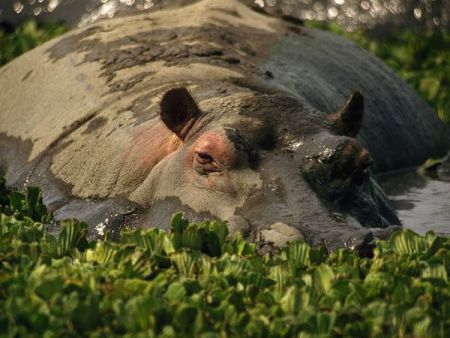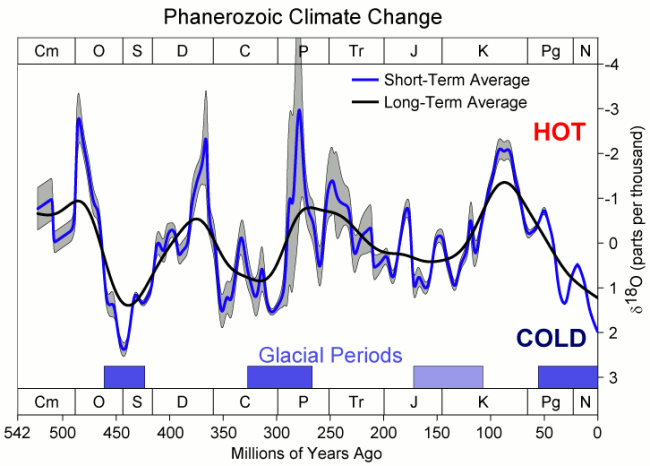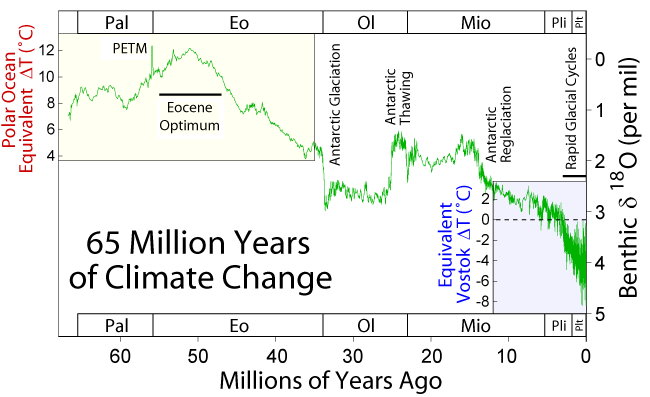 As our paleontological readers know, we are currently living in an Ice Age, right now in a minor somewhat warm (but not today) interglacial respite between the last and the next major glacial incursion.
As our paleontological readers know, we are currently living in an Ice Age, right now in a minor somewhat warm (but not today) interglacial respite between the last and the next major glacial incursion.
History does matter, boys and girls. The most recent major interglacial (as opposed to the mini warm spells as in the past few thousand years) is known as the Eemian Interglacial. It lasted around 15,000 years, beginning about 130,000 years ago, and ended with our current ice age cycle.
Via Gene Expression:
At the peak of the Eemian, the northern hemisphere winters were generally warmer and wetter than now, though some areas were actually slightly cooler than today. The Hippopotamus was distributed as far north as the rivers Rhine and Thames…Trees grew as far north as southern Baffin Island in the Canadian Arctic Archipelago instead of only as far north as Kuujjuaq in northern Quebec, and the prairie-forest boundary in the Great Plains of the United States lay further west — near Lubbock, Texas, instead of near Dallas, Texas, where the boundary now exists. The period closed as temperatures steadily fell to conditions cooler and drier than the present, with 468-year long aridity pulse in central Europe…and by 114,000 years ago, a glacial period had returned.
The Eemian was the time when Homo sapiens began moving north out of Africa and the Middle East.
Sometimes it's a good idea to put things in perspective. Just for fun, here's the past 500 million years of climate change. We're still in an alarming and great 50-million year glacial, cold period, period with ups and downs within it. It's a fact that the earth, right now, is about as cold as it has ever been in the past half-billion years.

That's the big picture. Here's more detail, of just the past 65 million years but even on this scale the Eemian doesn't show:



 As our paleontological readers know, we are currently living in an Ice Age, right now in a minor somewhat warm (but not today) interglacial respite between the last and the next major glacial incursion.
As our paleontological readers know, we are currently living in an Ice Age, right now in a minor somewhat warm (but not today) interglacial respite between the last and the next major glacial incursion.
